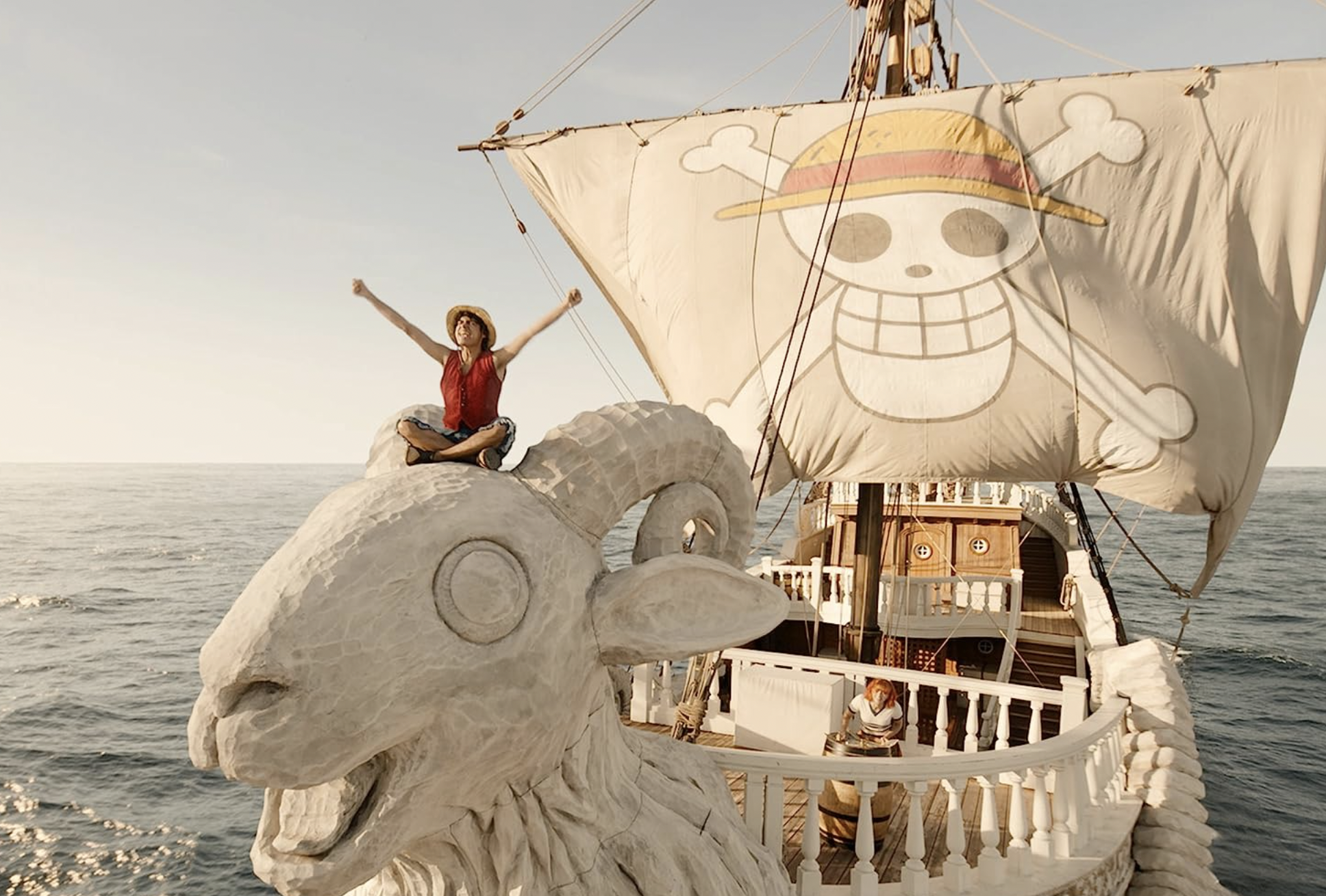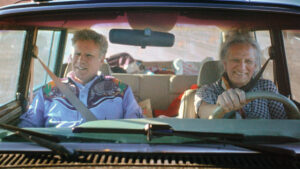With over 1074 episodes and 516 million copies sold, One Piece has not only toppled records as a best-selling manga and chart-topping anime—it has become a cultural phenomenon. For 26 years, fans have eagerly watched the pirate crew sail the seas, quite literally growing up alongside these characters.
So when Netflix announced a live-action adaptation, devotees were understandably concerned. The company’s track record with live-action adaptations, especially for anime, is horrific—from Death Note (2017) to the notorious Fullmetal Alchemist, fans have learned to brace for the worst. The world of anime—often a far cry from the mechanics of the real world—rarely translates well to screen, and as such producers often debase source material in making live-action adaptations of cherished franchises.
One Piece, however, has surpassed all expectations, racking up a well-deserved 18.5 million views in its first week on Netflix. A beautiful combination of nostalgia and cinematic creativity, the beloved characters and expansive universe are masterfully brought to real-life. Unlike its shoddy predecessors, the live-action One Piece replicates the joy, authenticity, and absurdity of its classic source material without falling into common pitfalls.
One Piece follows Monkey D. Luffy (Iñaki Godoy), a pirate pursuing the title of Pirate King and the ultimate treasure, One Piece. He collects other fellow dreamers on his crew, from swordsman Zoro (Mackenyu) to cook Sanji (Taz Skylar), thief Nami (Emily Rudd), and their marksman, Usopp (Jacob Romero). Luffy is a powerhouse of both strength and personality, often making crewmates out of enemies by completely changing their lives while flashing a goofy smile. The live action is centered around the first five members of the Straw Hat Pirates, dubbed for the precious straw hat Luffy wears in honor of his mentor Shanks (Peter Gadiot). A shonen-style plot chock-full of action, humor, and friendship, the show focuses on the bonds between the characters as they work together to find the One Piece while simultaneously striving to achieve their own dreams.
The characters, undoubtedly the heart and soul of the show, allow the live action to thrive. Eiichiro Oda, the creator of One Piece, worked closely with the show’s casting team and producers, and his contributions may be one of the reasons the actors showcase such care and dedication for their roles. Godoy shines as Luffy—the perfect mix of foolish and brilliant. He’s someone who, more so than the vibrant costumes or CGI devil fruits, makes you believe that the show has truly come to life—a trait necessary for the main character. The rest of the crew is no different. Skylar trained in MMA, Tae Kwon Doe, and with culinary chefs to perfect the role of Sanji. Each actor is true to their respective character, and their recent virality on social media, success in interviews, and more reflects their willingness to embody their roles.
The transformation from fantastical manga and anime to live action can be the pitfall where adaptations have plummeted and died brutal, sad deaths. But One Piece recognizes its own absurdity and runs with it. Odd camera angles and shots enhance the stretchiness of Luffy’s rubber arms, and some sequences even parallel the anime’s earliest and most beloved frames shot-for-shot—from Nami begging Luffy for help to Zoro’s fight with the world’s greatest swordsman, Mihawk (Steven John Ward). The show is a testament to Oda’s work, relying heavily on the source material to spin its tale, which can’t always be said of other lackluster adaptations.
Despite its commitment to accurate portrayals, the live action falls short when depicting the unrealistic physical aspects of animated characters and the fantastical world of One Piece. The show takes liberties—but that’s okay. Sanji lacks his trademark curly eyebrow; Usopp’s missing his long nose; and Luffy wears real shoes instead of flip flops. However, the authenticity of real life doesn’t detract from the familiar personalities. Even if these changes were made for practicality’s sake, the most important qualities of the show—the ones that have caused it to dominate for more than two decades—still remain: its loveable characters, suspenseful action, and hilarious quips and bickering.
I won’t lie and say it’s perfect. The show gets Riverdale-levels of weird at times, especially as it balances the brutality of pirates and the levity of animation. Buggy the Clown (Jeff Ward) feels like a Joker parody that fell into a Saw movie. Arlong (McKinley Belcher III), the leader of the evil pirate crew who imprisons Nami, is not horrifyingly evil insomuch as a goofy-looking imitation of an Italian mafioso (with weird nasal bones). But the show is trying. There’s no world in which Arlong or Buggy aren’t weird, and the show’s awkward attempt at balancing absurdity and authenticity doesn’t detract from the sit-up-and-gasp moments—and there are so many.
Returning fans will find that every episode is a sentimental flashback to their first watch-through. Rewatching an anime like One Piece (estimated to take nearly 54 days of 8-hours a day to finish solely what is out now) is a nigh impossible task, but the live action makes you want to do just that. Meeting each character is even more satisfying knowing where they’re headed and what they’ve done. Watching each crew member make an oath to achieve their dreams—for themselves, for Luffy, and for the world—is a joyous thing to witness.
As for new fans, the show’s eight episodes—each about an hour—are far more accessible and digestible than starting a 1,000+ episode show on Crunchyroll. One Piece’s pacing, a frequent flaw to an otherwise impeccable anime, is infamous. The live action successfully condenses 45 episodes of material into eight; and it doesn’t feel rushed, likely because it cuts the parts of the anime that drag. When boiled down to an action-packed plot, the show is bustling without being overwhelming.
Watching the live-action remake of One Piece is a fresh gust of nostalgia and sentiment. Expectations don’t always live up to reality, but the real-life adaptation of the show far surpassed mine.





